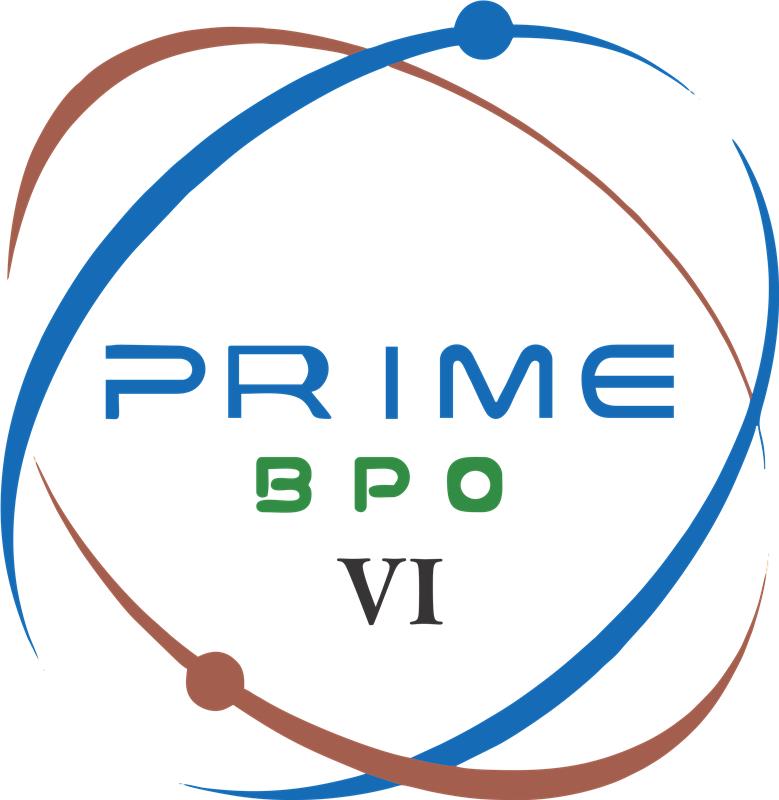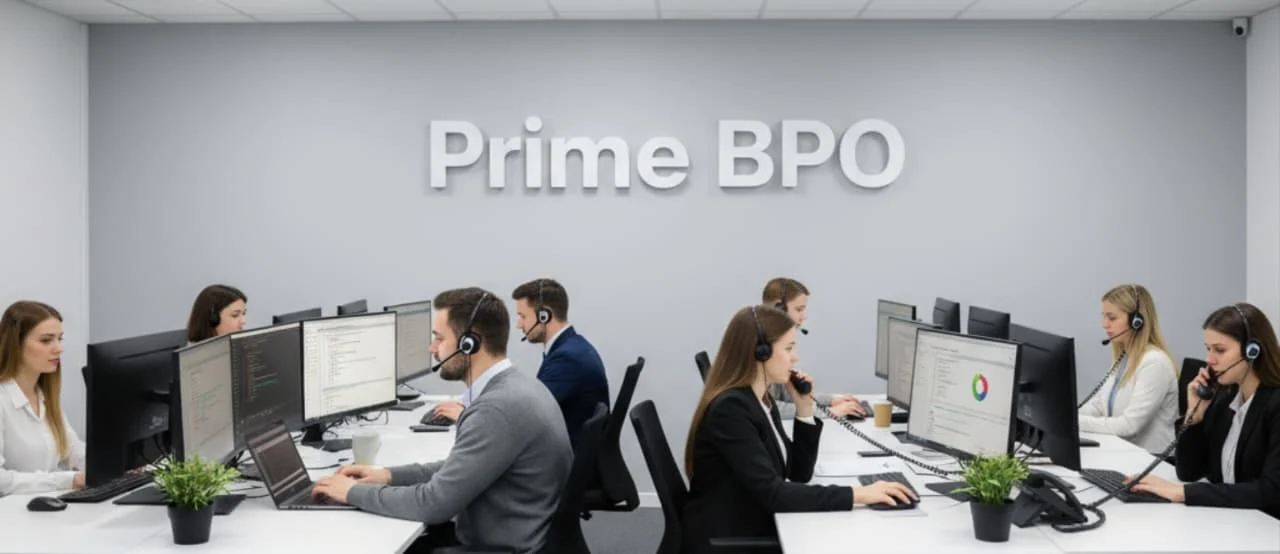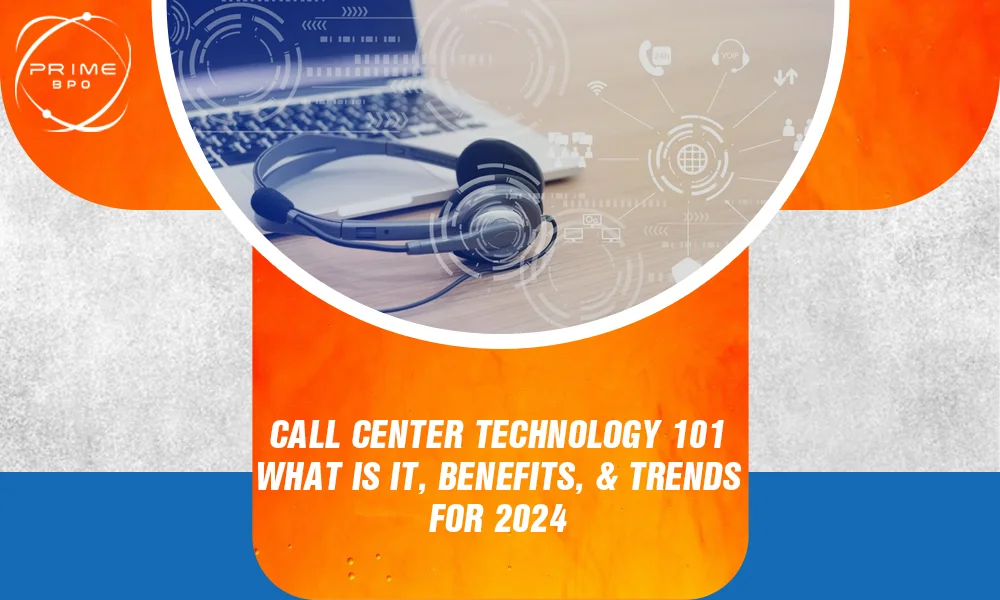Call Center Technology: What Is It, Benefits, and Trends for 2024
In the dynamic realm of customer service, innovative call center technology powers the heartbeat of efficiency. As we enter 2024, the communication landscape continues to evolve, and call centers are at the forefront of this transformation. As we embark on this journey, we'll explore the complexities of call center technology 101, exploring their diverse types, unlocking the benefits they brings to businesses, and peering into the trends that are set to shape the customer service landscape in 2024.
Get ready to discover how technology isn't just changing the way we make calls; it's reshaping the very essence of customer interactions, making each one a strategic opportunity for businesses to thrive in an era of unprecedented connectivity. Welcome to the forefront of customer service evolution – welcome to Call Center Technology 101.
What is Call Center Technology?
Traditional call center infrastructures have evolved beyond telephony, incorporating cutting-edge technologies that enhance efficiency, improve customer experiences, and drive operational excellence. Understanding call center technology 101 is like unlocking the heartbeat of modern customer service. It encapsulates a suite of tools and systems meticulously designed to streamline communication between businesses and their customers. In the realm of call centers, gone are the days of traditional telephony as advanced technologies take the center stage.
Get Free Quotes
Customized Options Await
From Automatic Call Distributors (ACD) intelligently routing calls to Interactive Voice Response (IVR) systems facilitating seamless interactions, calling tech is a symphony of innovation aimed at enhancing efficiency, improving customer experiences, and driving operational excellence. In essence, it's the backbone of customer service operations, propelling businesses into an era where each call is a strategic opportunity to connect and serve.
1- Cloud-Based Internet Calling (or VoIP)
VoIP (Voice over Internet Protocol) refers to cloud-based Internet calling, a modern technology used for making and receiving telephone calls via the Internet. VoIP converts voice data into packets and sends them over the internet instead of using copper wires or physical infrastructure. Using this technology, communication solutions can be scalable and flexible without requiring expensive hardware like PBX systems.
Flexible and accessible, cloud-based internet calling has many advantages. With an internet connection, users can make phone calls from any device. These devices include smartphones, tablets, and computers. Additionally, VoIP offers advanced features like video calling, instant messaging, and integration with other software applications, making it one of the most versatile and powerful communication tools of the twenty-first century.
2- Automatic Call Distributors (ACD)
The Automatic Call Distribution (ACD) system in call centers distributes incoming calls based on pre-established criteria to agents or individuals. Algorithms are used in ACD systems to determine which agent or department will handle each incoming call. It reduces the amount of time that callers have to wait for a response and ensures that the best resource is selected to handle their call.
An ACD system can distribute calls according to a variety of factors, including the caller's phone number, the dialed number, the time of day, and agent availability. Callers can select an option to reach the correct destination using interactive voice response (IVR) technology in some ACD systems.
3- Interactive Voice Response (IVR)
An Interactive Voice Response (IVR) system is a call center technology 101 uses voice and DTMF tones to communicate with a human via a keypad. In a variety of industries, including customer service, call routing, and payment processing, IVR systems can handle a high volume of incoming calls.
IVR systems use prerecorded voice prompts and menus to give callers options and information. They can navigate the menus with their phone keypad or voice commands. It is possible to enhance the efficiency and personalization of customer service by integrating IVR systems with other systems, such as customer databases and CRMs.
4- Customer Relationship Management (CRM) Integration
The integration of Customer Relationship Management (CRM) systems with other systems to centralize customer-related information and enhance customer experience is known as CRM integration. It involves connecting a CRM system with other systems, such as communication channels (e.g., phone, email, chat), marketing platforms, and data sources.
Companies can improve customer service by integrating CRM with other business systems, eliminating manual data entry tasks, and streamlining workflows. Integration of CRM with a communication channel, for instance, enables agents to see customer information in real-time and provide more tailored help.
5- Call Queuing
An efficient way to manage high volumes of incoming calls is by using call queueing. All incoming calls are queued until an agent becomes available when all agents are busy helping other callers. An announcement or music can be heard while calling into the queue to indicate that the call will be answered soon.
Additionally, call queuing systems can provide callers with estimated wait times or an option to request a callback rather than waiting on hold. The use of call queuing allows call centers to handle spikes in call volume, provide information to callers, and ensure that their calls are answered in the order they were received.
6- Predictive Dialers
Using predictive dialers, a phone number can be dialed multiple times simultaneously and a time when a live agent will be present to take the next call can be predicted. Using algorithms, these systems evaluate call patterns and agent availability to maximize efficiency and minimize idle time.
Increasing call center productivity is a common use of predictive dialers in telemarketing, customer service, and debt collection. A predictive dialer reduces the time agents spend waiting between calls by automatically dialing numbers and connecting them to live calls, resulting in more conversations and sales.
7- Skills-Based Routing
In call centers, skills-based routing assigns incoming calls to the most suitable agent based on their expertise, skill set, or availability. It improves customer satisfaction and efficiency by connecting callers with agents who can best handle their specific needs.Each agent is assigned a skill level based on factors like product knowledge, language proficiency, or customer service experience.
As soon as a call is received, the system analyzes it and matches the caller with the best available agent based on his or her needs. It is possible to reduce the number of calls transferred, to shorten communication times, and to enhance the percentage of first-call resolutions by using this technology.
8- Screen Pop
Among call center technology 101, an automatic display of relevant customer information on a computer screen, when a call is received or initiated, is referred to as a screen pop. Customer relationship management (CRM) systems store information such as the name, contact information, and previous interactions of the caller.
Get Free Quotes
Customized Options Await
Screen pop allows call center agents to access relevant information about customers instantly, improving their efficiency and personalization. Shorter call times and higher satisfaction are the results of agents quickly reviewing the caller's history and addressing their needs without asking for repetitive information. IVR selections, CRM data, or the caller's phone number can trigger a screen pop .
9- Conversational AI
By automating and intelligently conversing with customers, conversational AI, or chatbots, are revolutionizing call center technology. Artificial intelligence-powered systems respond in real time to customer queries through natural language processing (NLP) and machine learning algorithms.
AI can provide information about products or services, answer frequently asked questions, and even resolve simple issues without human intervention in call centers. With this technology, call wait times can be significantly reduced, first-call resolution rates can be increased, and overall customer satisfaction can be improved. In addition, conversational AI can integrate seamlessly with other call center technology 101, like CRM and knowledge bases, to enhance customer service.
Types of Call Center:
There are different types of Call center, each catering to specific business needs and customer interactions. Understanding the distinctions among these types of call center infrastructure is essential for organizations to deploy the most suitable model:
Inbound Call Centers:
Inbound calling tech primarily handle incoming customer calls seeking assistance, support, or information. Agents are trained to address queries, resolve issues, and provide information, fostering positive customer experiences.
Outbound Call Centers:
Outbound call centers focus on making outgoing calls to customers, prospects, or leads. Typical applications include telemarketing, sales, and follow-up calls. Predictive dialers are often employed to maximize agent productivity in outbound call centers.
Blended Call Centers:
Blended call centers seamlessly combine both inbound and outbound functionalities. This model allows organizations to balance customer support with proactive outreach, optimizing agent utilization and fostering versatility in operations.
Virtual Call Centers:
Virtual call centers leverage cloud-based technology, enabling agents to work remotely from various locations. This model enhances flexibility, scalability, and cost-effectiveness, making it an ideal solution for businesses embracing remote work trends.
Technical Support Call Centers:
Specializing in technical assistance, these call centers handle complex product or service-related inquiries. Technically trained agents troubleshoot issues, guide customers through problem-solving processes, and ensure smooth product usage.
Benefits of Call Center Technology:
Adopting advanced contact center technology 101 brings forth many benefits that resonate across the entire business spectrum. Here are some of them:
Enhanced Customer Experience:
Integrating AI, chatbots, and self-service options empowers customers to find solutions quickly, leading to higher satisfaction levels. Additionally, personalized interactions facilitated by CRM integration elevate the overall customer experience.
Increased Efficiency:
Automating routine tasks, such as call routing and issue categorization, frees up agent time for more complex problem-solving. This not only boosts agent productivity but also accelerates issue resolution for customers.
Optimized Resource Allocation:
ACD systems and predictive dialers intelligently allocate resources, ensuring that agents are deployed where needed most. This prevents bottlenecks, reduces wait times, and enhances overall operational efficiency.
Data-Driven Decision Making:
The wealth of data generated by call center technology provides valuable insights into customer behavior, preferences, and common pain points. This data-driven approach enables businesses to make informed decisions for continuous improvement.
Trends Shaping Call Center Technology in 2024:
As we navigate through 2024, several trends are poised to shape the trajectory of call center technology 101, ensuring that businesses stay at the forefront of customer service innovation.
AI-Powered Virtual Assistants:
The integration of AI-driven virtual assistants is set to soar, providing customers with instant responses to queries and automating routine tasks. This reduces agents' workload and delivers immediate support to customers.
Omnichannel Communication
The demand for seamless communication experiences across multiple channels continues to rise. Call center technology adapts to support omnichannel integration, allowing customers to transition effortlessly between phone, chat, email, and social media platforms.
Advanced Analytics and Reporting
The emphasis on analytics and reporting is intensifying, with call centers leveraging advanced tools to gather, analyze, and interpret data.
Remote Work Enablement
The trend towards remote work, accelerated by global events, is influencing contactl center technologies. Cloud-based solutions and collaboration tools are becoming more prevalent, allowing agents to work seamlessly from anywhere worldwide.
Security and Compliance Measures
With an increased focus on data security and privacy, call center technology is incorporating robust measures to ensure compliance with regulatory standards. Encryption, secure authentication, and data protection protocols are becoming paramount in the design of these systems.
Get Free Quotes
Customized Options Await
Call Center Implementation Plan: Future of Call Center Technology
Implementing call center trends involves a strategic and well-thought-out plan to ensure a smooth transition and optimal performance. Here's a comprehensive guide to the key steps in a call center trends implementation plan:
Assessment of Needs:
Begin by assessing your business needs and objectives. Clearly define the call center's purpose, whether it's focused on customer support, sales, or a combination of functions.
Technology Selection:
Choose the right call center technology that aligns with your business goals. This includes selecting an Automatic Call Distributor (ACD), Customer Relationship Management (CRM) system, and additional tools like predictive dialers or virtual assistants.
Infrastructure Setup:
Establish the necessary physical and technological infrastructure for the call center. This includes configuring workstations, setting up phone systems, and ensuring seamless connectivity.
Training Programs:
Develop comprehensive training programs for call center agents. Training should cover product knowledge, communication skills, and the use of call center software to ensure agents are well-prepared for their roles.
Quality Monitoring and Feedback Mechanisms:
Implement quality monitoring tools to assess agent performance. Establish feedback mechanisms to provide constructive feedback, recognize achievements, and address areas for improvement.
Security Measures:
Implement robust security measures to protect customer data and ensure compliance with data protection regulations. Encryption, secure authentication, and stringent access controls are crucial elements.
Testing and Optimization:
Conduct thorough testing of the call center system before full deployment. Identify and address any issues and optimize processes to ensure efficiency and effectiveness.
Scalability and Flexibility
Design the call center with scalability in mind. Ensure that the infrastructure and technology can quickly adapt to changes in call volume, business expansion, or evolving requirements.
Integration with Business Operations:
Integrate the call center seamlessly with other business operations, such as marketing, sales, and customer support. This ensures a cohesive and coordinated approach to customer interactions.
A well-executed call center implementation plan is integral to the success of customer service operations. By carefully considering each step and customizing the plan to fit the business's unique needs, organizations can establish call center trends that not only meet customer expectations but also contribute to overall business success.
Conclusion
In the end, the world of call center technology 101 is a dynamic landscape, constantly evolving to meet the ever-changing demands of customer service in 2024 and beyond. As we explore diverse contact center modernization via types and delve into comprehensive implementation plans, it becomes evident that the future is shaped by innovation, flexibility, and a relentless commitment to customer satisfaction.
Embracing cutting-edge technology not only enhances operational efficiency but also paves the way for businesses to establish meaningful connections with their audience. So, as we bid adieu to this exploration, let us embrace the limitless possibilities that call center technology 101 holds, propelling businesses toward a future where every call is an opportunity and every interaction is a chance to exceed customer expectations.
Frequently Asked Questions (FAQs):
1. What technology do call center agents use?
- Call center agents use various technologies to handle customer interactions efficiently. Common technologies include:
- Customer Relationship Management (CRM) software
- Automatic Call Distributors (ACDs)
- Interactive Voice Response (IVR) systems
- Computer Telephony Integration (CTI)
- Call recording and monitoring systems
- Knowledge base and ticketing systems
- Live chat software
- Email management systems
2. What are the systems used in call centers?
Call centers utilize several systems to manage and optimize their operations, including:
- Workforce Management (WFM) software
- Quality Management (QM) systems
- Reporting and Analytics tools
- Knowledge Management systems
- Call Recording and Monitoring systems
3. What is the future for contact center technologies?
The future of contact center technologies is likely to include advancements in artificial intelligence (AI), machine learning, chatbots, natural language processing (NLP), sentiment analysis, omnichannel integration, and cloud-based solutions. These technologies will enable more personalized and efficient customer interactions across multiple channels.
4. What are the technologies in a call center?
- Technologies commonly used in call centers include:
- Customer Relationship Management (CRM) systems
- Automatic Call Distributors (ACDs)
- Interactive Voice Response (IVR) systems
- Computer Telephony Integration (CTI)
- Predictive Dialers
5. What is a technical call center?
A technical call center is a specialized call center that provides technical support and assistance to customers experiencing issues with products, services, or technology. Technical call center agents are trained to troubleshoot technical problems, provide solutions, and escalate complex issues to higher-level support teams if necessary. They typically use specialized software and tools to diagnose and resolve technical issues efficiently.






